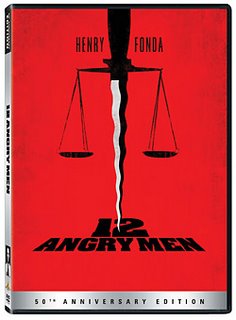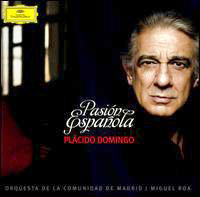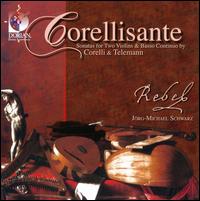Black and White and Shades of Gray
 As I begin this blog, word has just come of the death of producer, director, and actor Sydney Pollack. The film world is poorer for his absence, and his work will be with us as long as movies are shown. Consider this:
As I begin this blog, word has just come of the death of producer, director, and actor Sydney Pollack. The film world is poorer for his absence, and his work will be with us as long as movies are shown. Consider this:He directed Out of Africa, produced The Talented Mr. Ripley and Sense and Sensibility, and had his turn in front of the cameras in productions ranging from Woody Allen's Husbands and Wives to his own Tootsie. Sydney Pollack was the guy who critiqued the results when screenwriter Emma Thompson sought to make Jane Austen accessible to a 20th century audience. Pollack was the guy who, playing Dustin Hoffman's agent in Tootsie, got off a couple of the movie's funniest lines -- no mean feat in a film that included Teri Garr, Bill Murray, and a cross-dressing Hoffman.
But my topic today concerns another Sidney, Sidney Lumet, whose first feature film, 12 Angry Men, has been reissued on DVD in a special 50th anniversary edition.
I'm becoming overwhelmed by the special edition DVDs that are being released one after the other. Among the recent titles that have been on hand at Olsson's: Fred Zinnemann's A Man for All Seasons, featuring a majestic Paul Scofield; David Lean's A Passage to India; Billy Wilder's Some Like It Hot; and of course the aforementioned 12 Angry Men.
It's no surprise that several of these classics are courtroom dramas. Those shattering cross-examinations by fiery prosecutors and righteous defense attorneys, with the accompanying witness meltdowns, are definitely the stuff of great cinema. Remember Gregory Peck in To Kill a Mockingbird? Remember Jack Thompson in Breaker Morant?
But there's not a lawyer in sight in this week's movie, at least not until you get to the DVD's special features. 12 Angry Men is unique in that it steps out of the courtroom and into the deliberation room, a technique used much later in the excellent British miniseries The Jury and -- though I blush to mention it -- during Little Mo's trial on the soap opera EastEnders.
Yeah, I watch EastEnders. Guilty as charged.
Returning to my theme, I'd say that despite my love for classic movies, it still astounds me to discover how riveting 12 Angry Men remains. It's remarkably austere: black-and-white cinematography, minimal music, limited sets, sobering themes. The screenplay is understated, implicit in its idealism, yet doesn't spare us the harsh, non-PC attitudes of its characters.
But somehow when you cram a dozen men into an overheated deliberation room with the murder weapon and their own frayed nerves, the result can be dramatic treasure.
Watch the movie and you'll understand why. First, there's Reginald Rose's still-relevant screenplay. Then there's the masterful cast, all evidently fully formed when we first glimpse them in the jury box, all about to take unsettling steps towards self-revelation -- and, for that matter, self-knowledge -- once everyone is sequestered in that hot, dreary room.
Switch on the commentary from Drew Casper of the University of Southern California, or watch the two featurettes included on the disc, and you'll understand how. For our witnesses, including the good professor, an array of camera-ready attorneys, and the last two survivors of the production, Lumet and actor Jack Klugman (Juror No. 5), handily reveal and/or dissect all the details and background that are too easily overlooked or taken for granted.
And despite the presence of star power in the form of Henry Fonda (he of the ), this is a real celebration of journeyman actors. If Fonda's clout got the movie made, the cast helped make it immortal.
It is true that some of the men need no introduction at all to fans of radio, the stage, classic movies, and the Golden Age of Television. Besides Fonda, there are two future Oscar winners, Martin Balsam and Ed Begley Sr. They are joined by film, stage, and television great Lee J. Cobb, as Juror No. 3.
Juror No. 4 is E.G. Marshall, whose voice has haunted me for years, thanks to his turn as the host of CBS Radio Mystery Theater. "Pleasant dreams."
Equally recognizable, though for completely different reasons, is Juror No. 2, actor John Fiedler, who made his feature film debut in this picture. It's a safe bet you know that voice, and so does your preschooler, thanks to Fiedler's many years of work on animated features!
And does anyone reading this not know who Jack Klugman is? For years, it seemed, you couldn't turn on a TV set in New York City without glimpsing Juror No. 5 in reruns of The Odd Couple, and maybe that was true in a lot of cities. A few of you might even know the original cast album of Gypsy, in which Ethel Merman famously invited Klugman to "Have an egg roll, Mr. Goldstone."
Klugman appears on this disc twice, first as a cast member and then to provide commentary in one of the featurettes, Beyond a Reasonable Doubt: Making 12 Angry Men. Thank God for Klugman's down-to-earth persona; otherwise, his presence would be unbearably poignant. He is, after all, the sole living cast member, and that raspy voice marks him as a cancer survivor to boot.
Things I learned through Internet research: While looking up online stories on Jack Klugman, I learned there is such a thing as a No Profanity Day in the Bronx. How would that work? And how could you possibly enforce it?
There's no profanity in 12 Angry Men, but if graphic language and violence are omitted, the essential grittiness of the story remains. The screenplay doesn't need today's more explicit approach; there's a certain power in holding something back. The undercurrent of rage, the suggestions of emotional scarring, and the gradual revelation of prejudices and motives propel the story.
It begins simply. A young man -- a boy, really -- is charged with murdering his father. This being 1950s New York, an all-male jury is set the task of deciding whether he will go free or to the electric chair.
The audience follows the men -- the actors listed above, plus Edward Binns, George Voskovec, Jack Warden, Robert Webber, and the excellent Joseph Sweeney -- out of the courtroom and into what becomes their battleground.
That's as much as I care to give away here. I'd suggest that both long-time fans and newcomers watch the movie through and then turn to the extras (i.e., the featurettes and commentary) before watching again. I particularly appreciated the analysis of Boris Kaufman's cinematography. For years, the dialogue and the power of the acting drew me to the film, so it was a revelation to see how the shots were composed and the camera angles chosen.
And being both a political junkie and a fan of the theater, I really appreciated all the cultural and historical context provided by the commentators. Today we're encouraged to focus on box office receipts and celebrity, and make everything bigger, louder, and faster. Therefore it's a pleasure to hear TCM's Robert Osborne, Professor Casper, and the rest of the gang discuss things like the Federal Theatre Project and the age of live TV. I even dare to think that we can substitute media literacy and thoughtful analysis for today's short attention spans.
So what do you think? In such a cynical era, is it possible to show 12 Angry Men and inspire discussion rather than yawns? Does the recent success of various documentaries, plus dramas such as Good Night, and Good Luck, point to a new era of idealism?
I hope so, and I hope succeeding generations are mesmerized by 12 Angry Men.



 I'm on something of a Pedro Almodovar movie kick these days -- I have a lot of ground to make up between Women on the Verge of a Nervous Breakdown and Live Flesh -- and if you have seen any of his films, you probably remember how popular songs insinuate themselves into those trademark Almodovar situations.
I'm on something of a Pedro Almodovar movie kick these days -- I have a lot of ground to make up between Women on the Verge of a Nervous Breakdown and Live Flesh -- and if you have seen any of his films, you probably remember how popular songs insinuate themselves into those trademark Almodovar situations.
